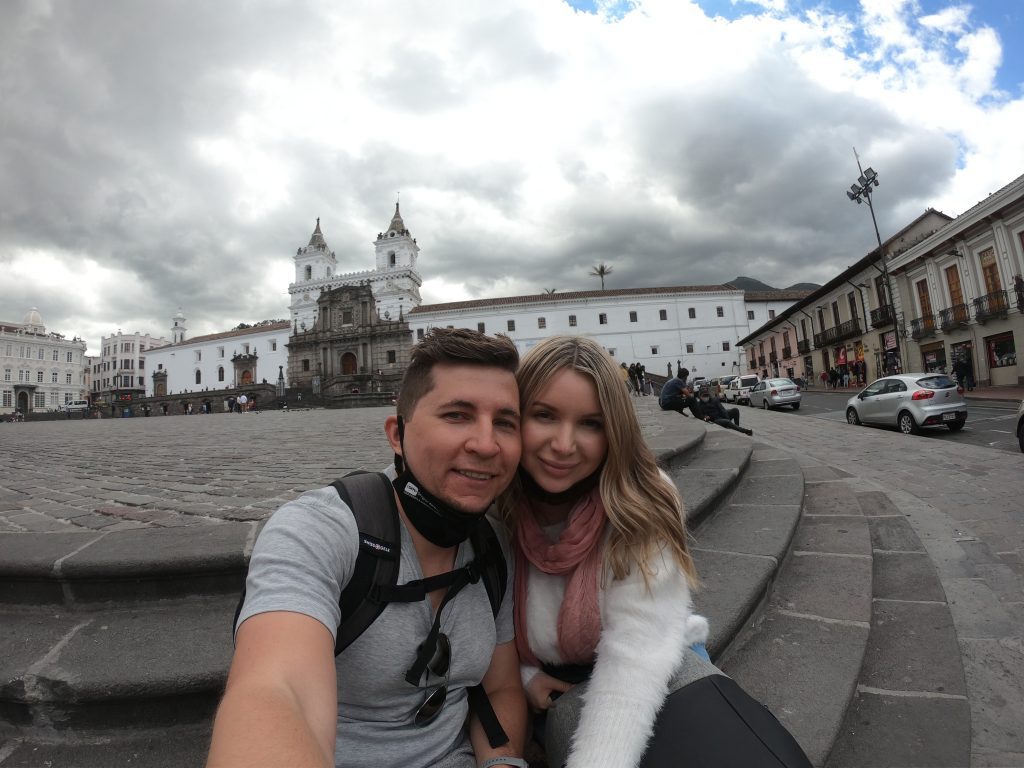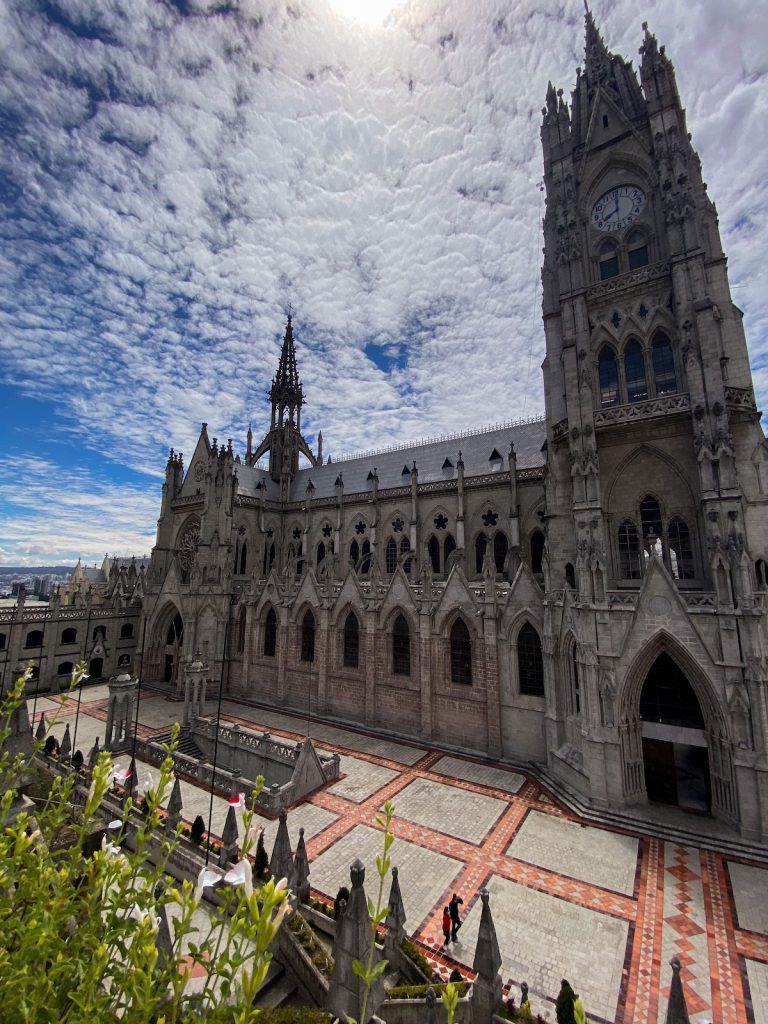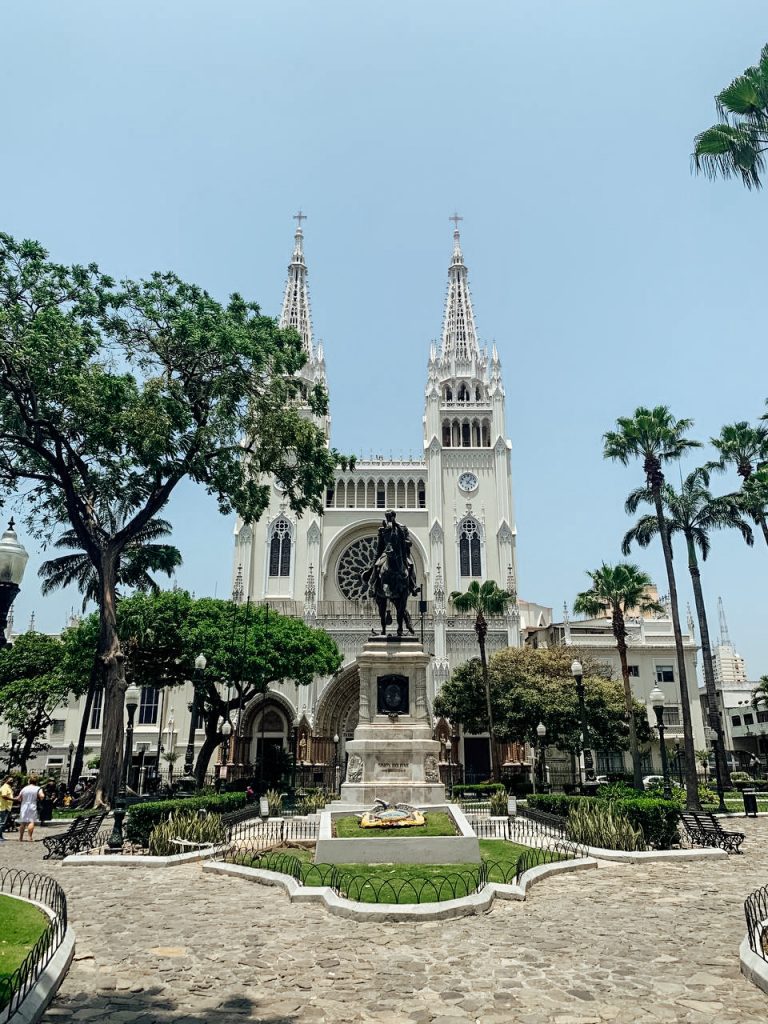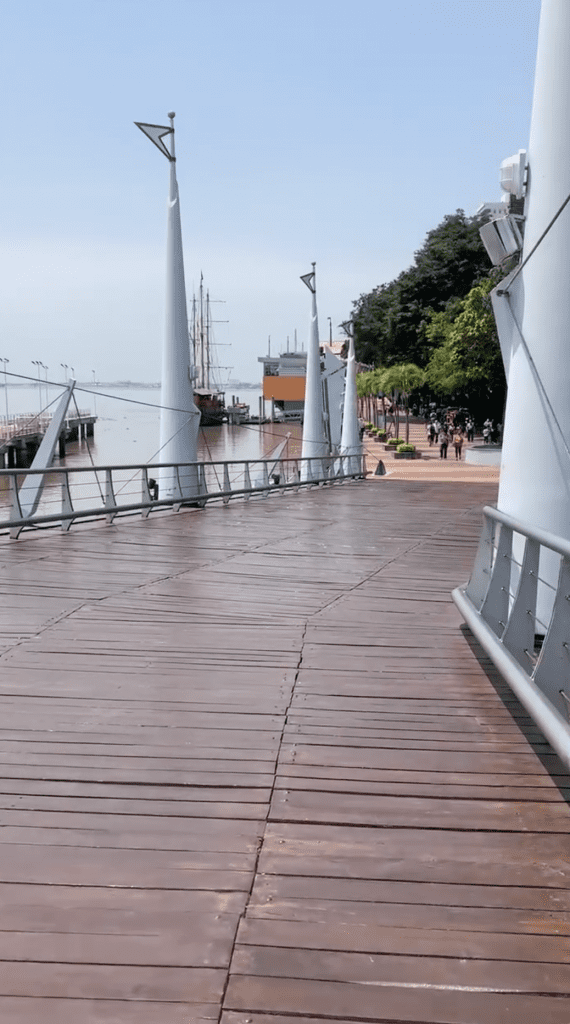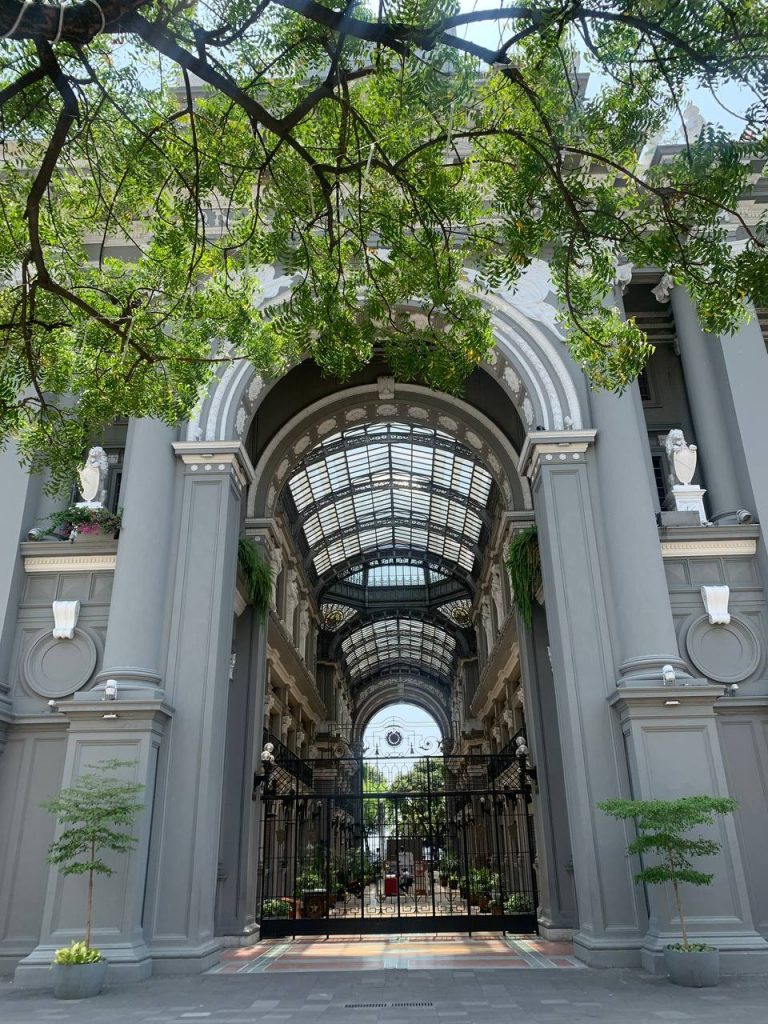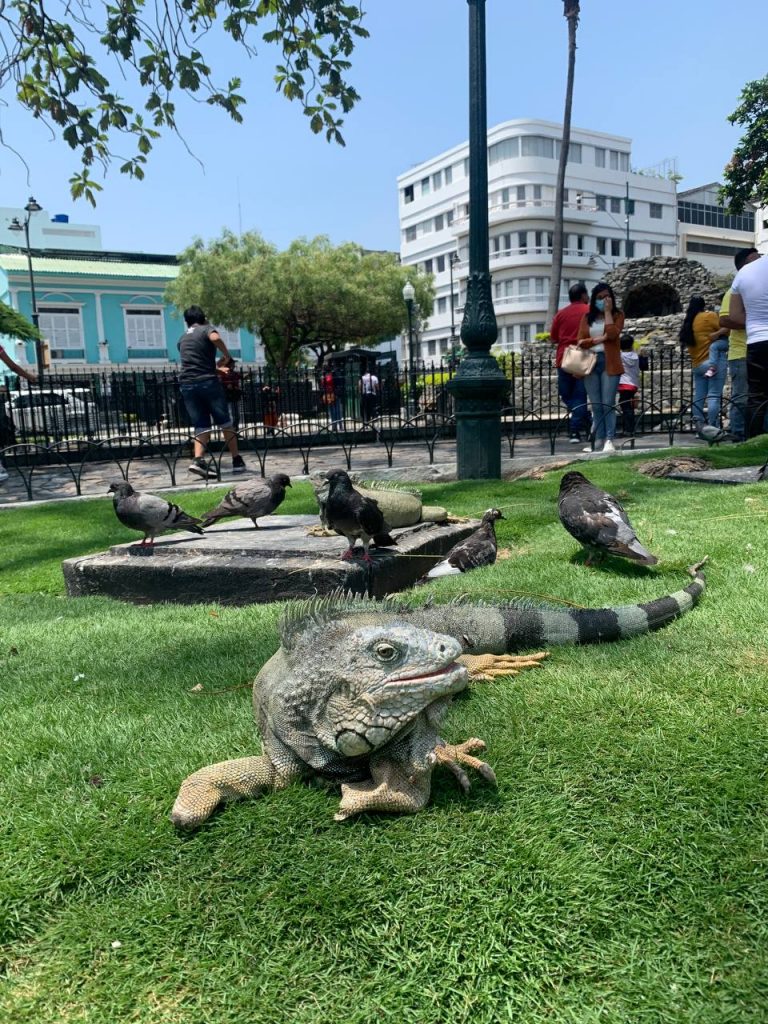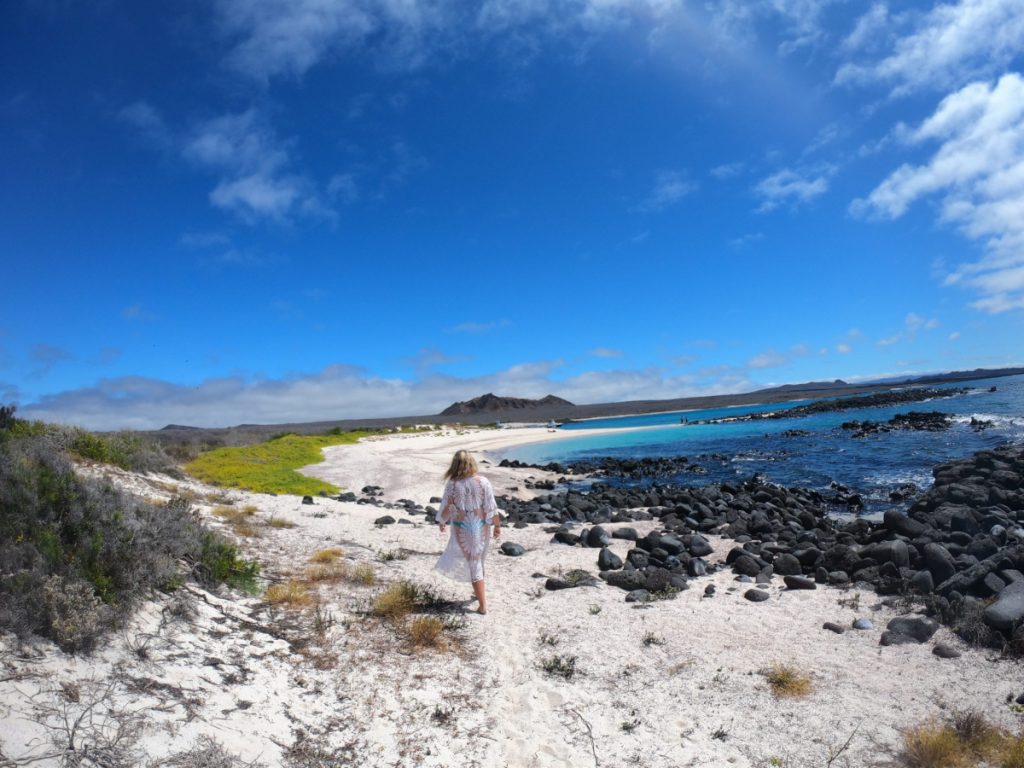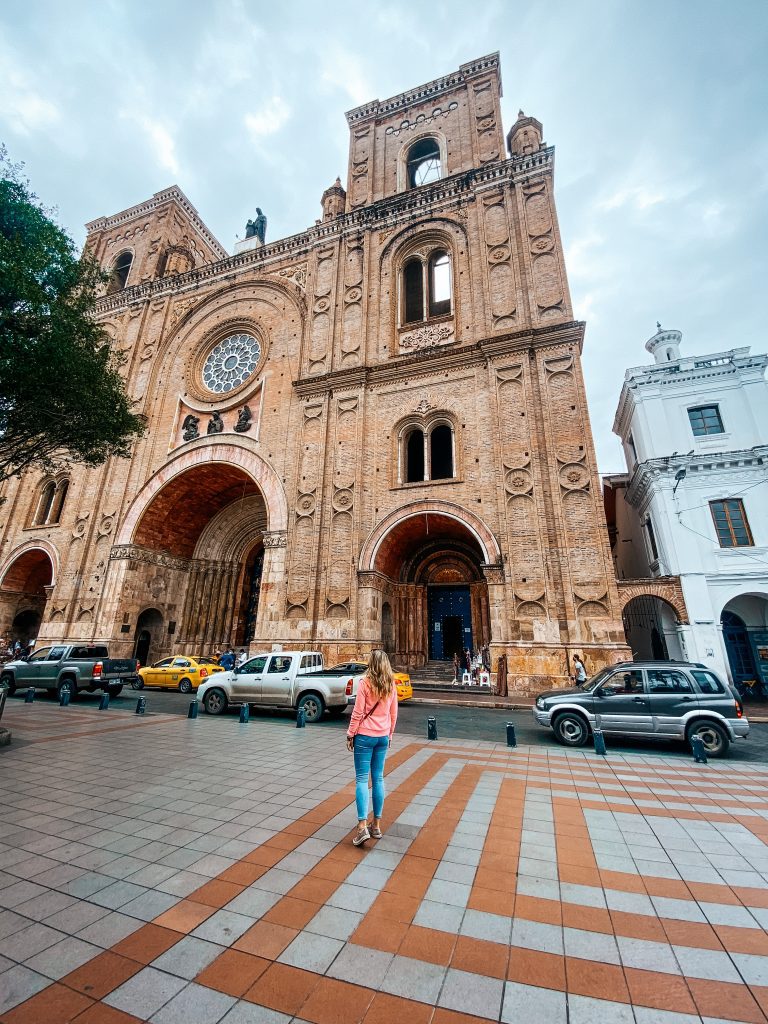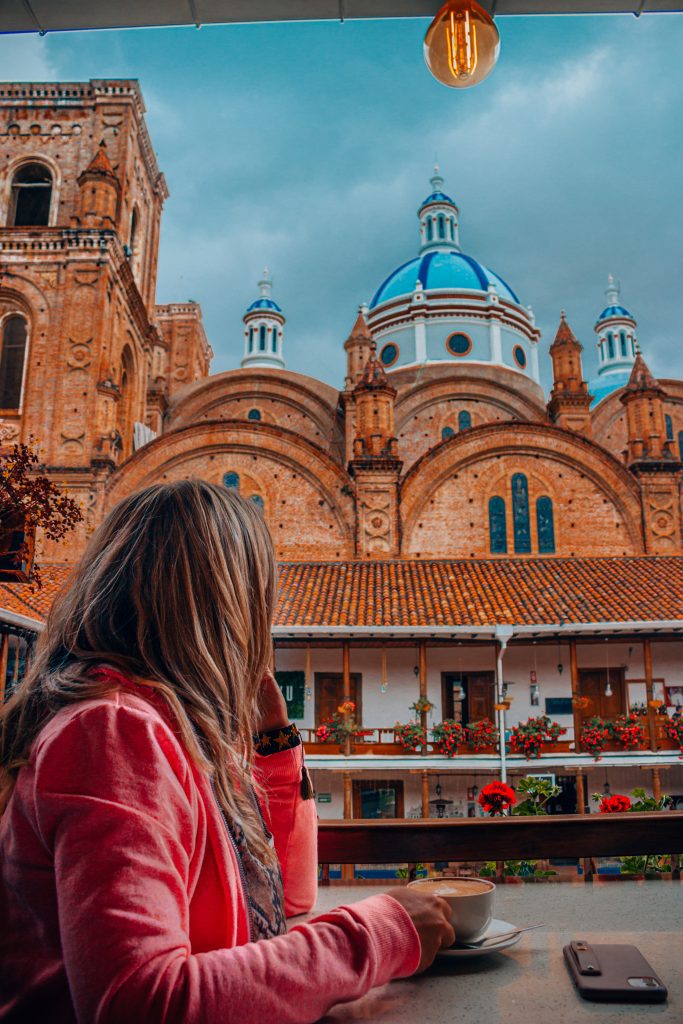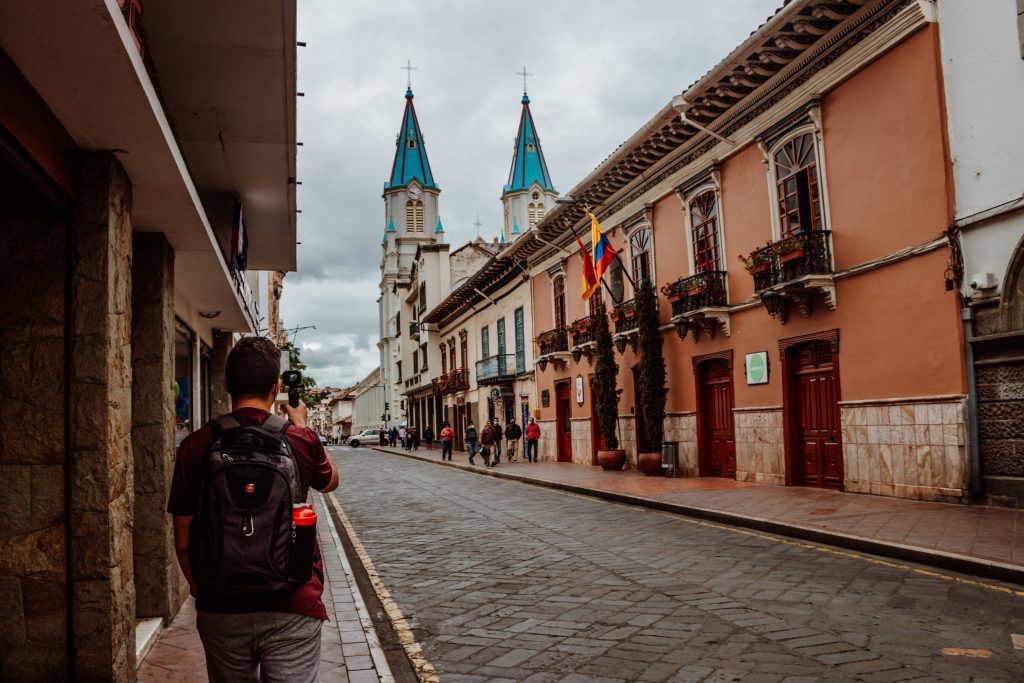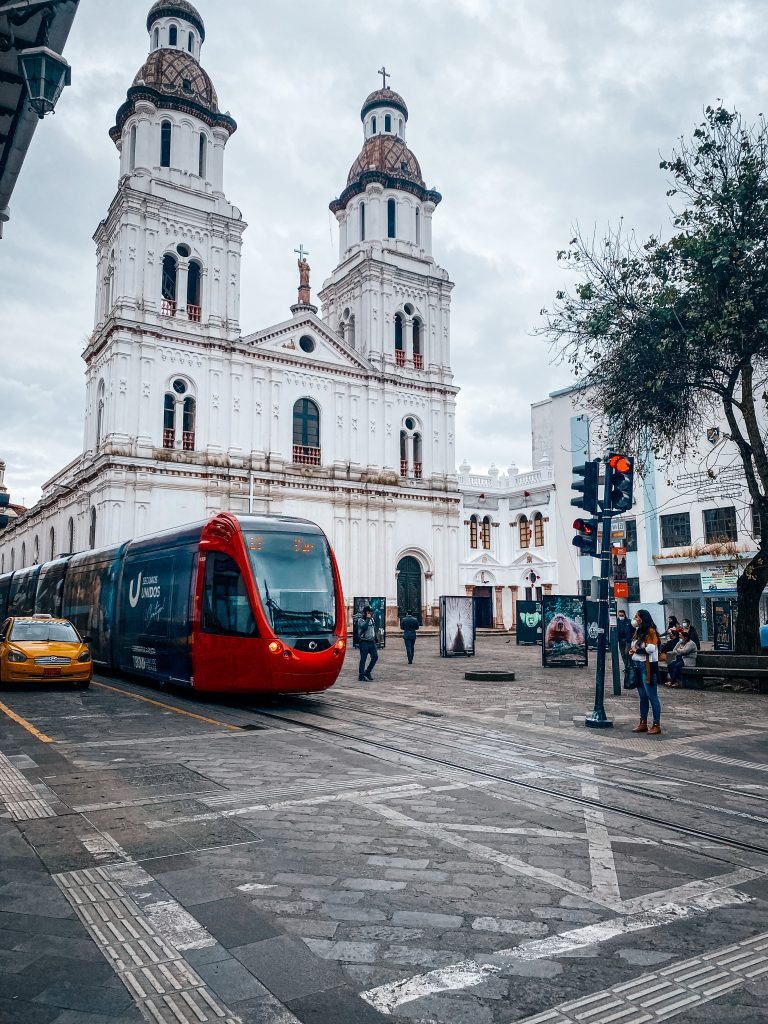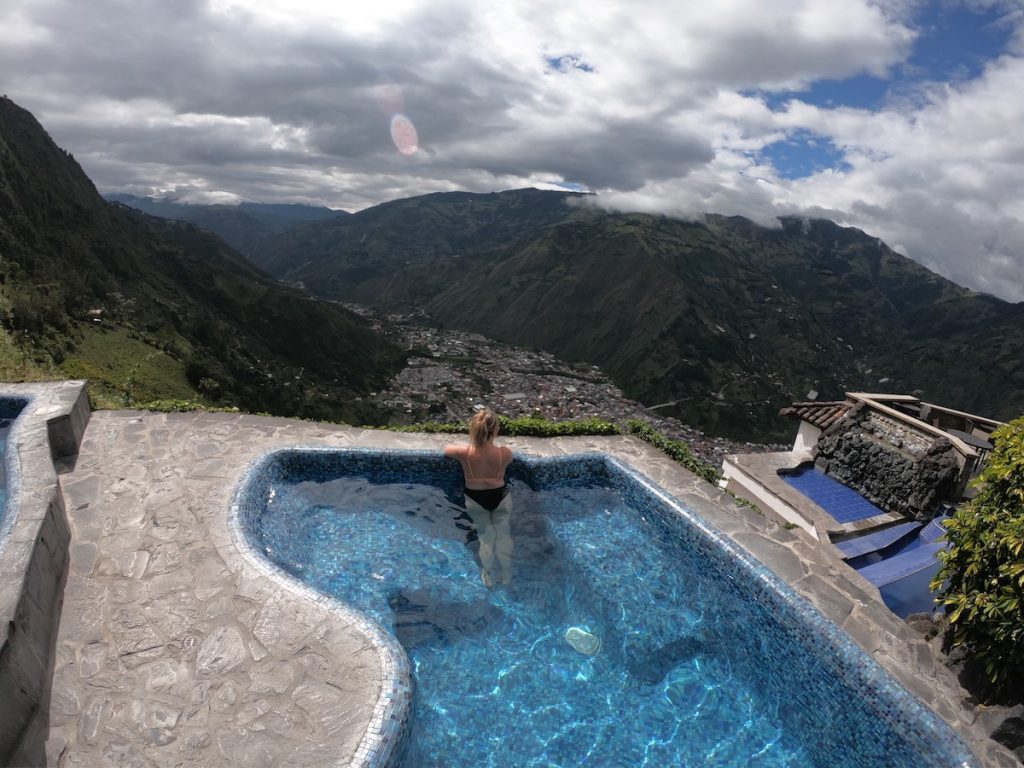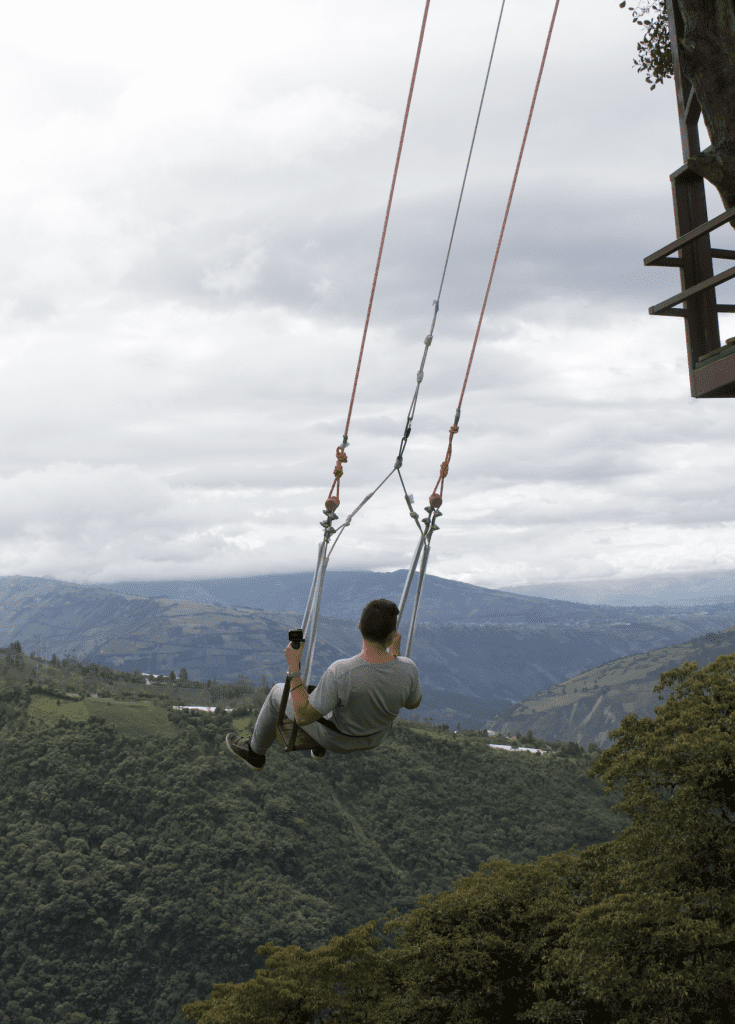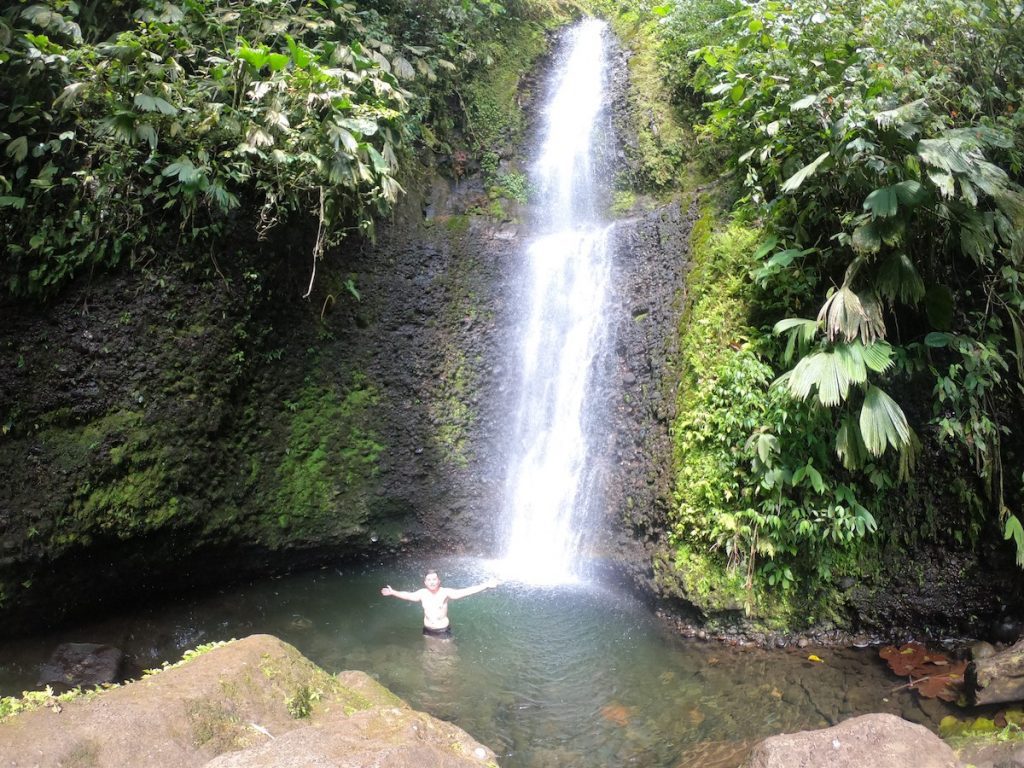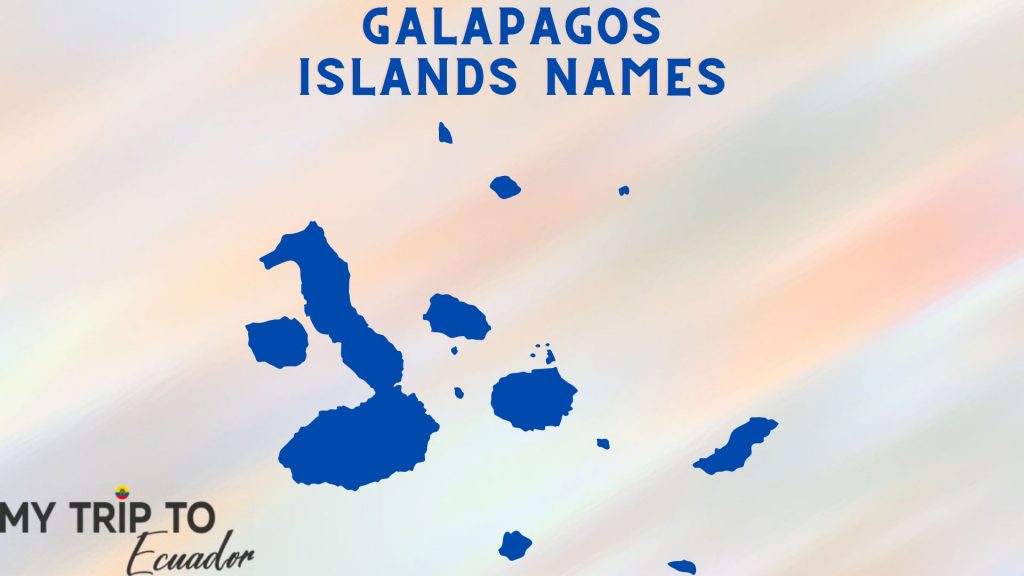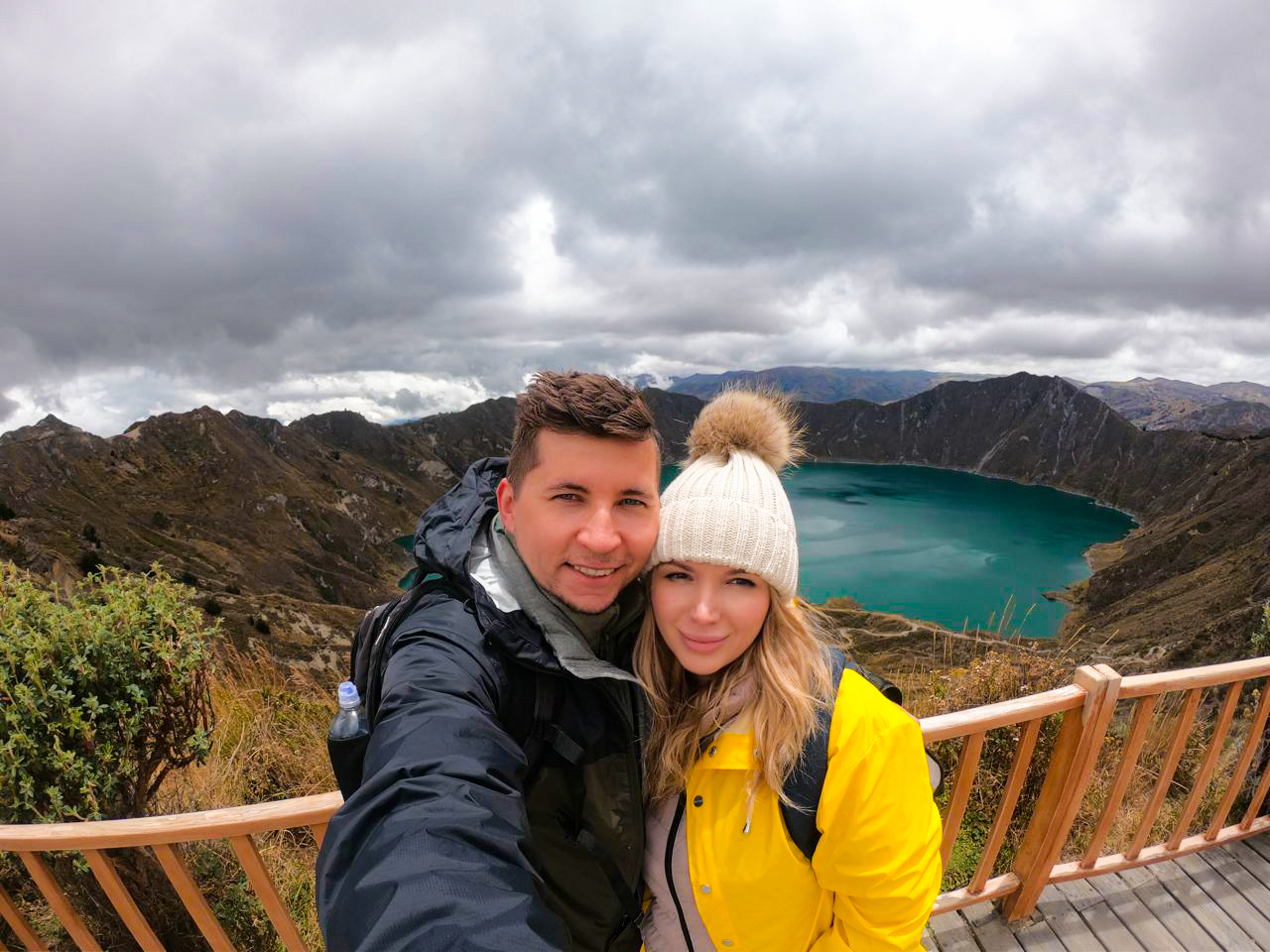Ecuador is home to vibrant and diverse cities that each showcase the country’s rich history, culture, and natural beauty in their own way. During our time exploring Ecuador, we found that every city offered its own unique charm and attractions, inviting us to experience local customs, fascinating architecture, mouthwatering cuisine, and breathtaking natural wonders. These are the Ecuadorian cities I highly recommend to visit:
In this travel guide, I’ll share some of the highlights from Ecuador’s major cities to help you prepare for an unforgettable journey of your own.
Looking back, understanding the unique charm of each Ecuadorian city made our journey unforgettable—from savoring local cuisine in Cuenca to thrilling adventures in Baños. Skip the guesswork I faced and get a FREE personalized Ecuador trip quote from my trusted local experts who know how to craft the perfect itinerary. Your booking helps support both this blog and local Ecuadorian communities.
Quito
Quito, the vibrant capital of Ecuador, holds the distinction of being the second-highest capital city in the world. With its rich history, impressive architecture, and stunning natural surroundings, Quito offers a perfect blend of old-world charm and modern allure.
During our visit, we were captivated by the city’s well-preserved historic center, filled with beautiful colonial buildings and charming plazas. As the political and cultural heart of the country, Quito welcomes visitors with warm hospitality and an array of attractions that truly showcase its unique heritage.
Quito: A UNESCO World Heritage Site
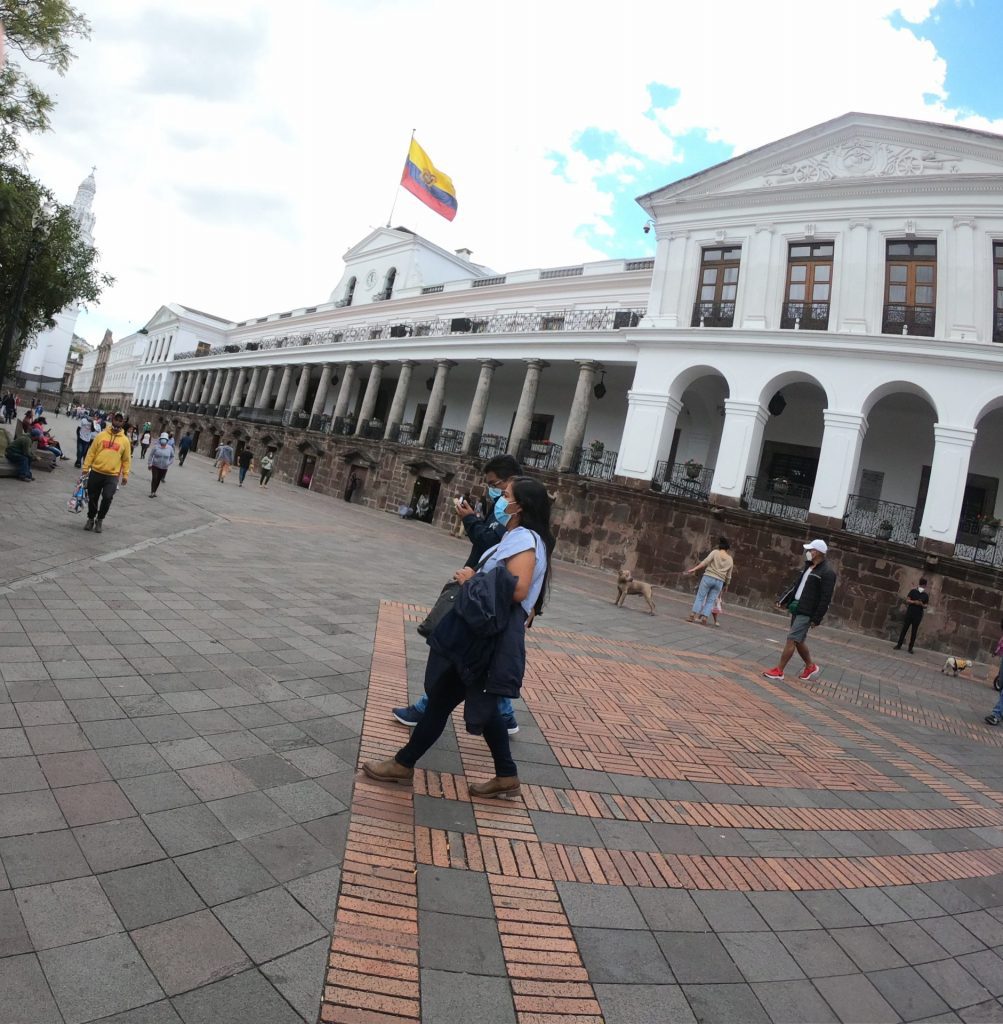
Exploring the Old Town (La Ciudad Vieja)
Plaza de la Independencia
We started our exploration of Quito’s Old Town at Plaza de la Independencia, the city’s vibrant main square. Surrounded by grand colonial buildings, including the Presidential Palace and the Metropolitan Cathedral, the square offers a perfect blend of history and modern life.
We spent some time just sitting on a bench, watching the lively scene unfold around us. It was a great way to soak in the atmosphere and get a feel for Quito’s unique mix of past and present.
Basilica del Voto Nacional
One of Quito’s most iconic landmarks, the Basilica del Voto Nacional, stands tall with its breathtaking neo-Gothic architecture. We couldn’t resist the chance to climb its towers for stunning panoramic views of Quito. The climb was thrilling and offered a bird’s-eye view of the city that made the effort worthwhile.
If heights aren’t your thing, you can still admire the Basilica’s intricate interior, with its stunning stained glass windows and beautiful stone carvings. We also had fun spotting the unique gargoyles shaped like Ecuadorian animals—a quirky touch that adds to the charm of this magnificent structure.
Museo del Carmen Alto
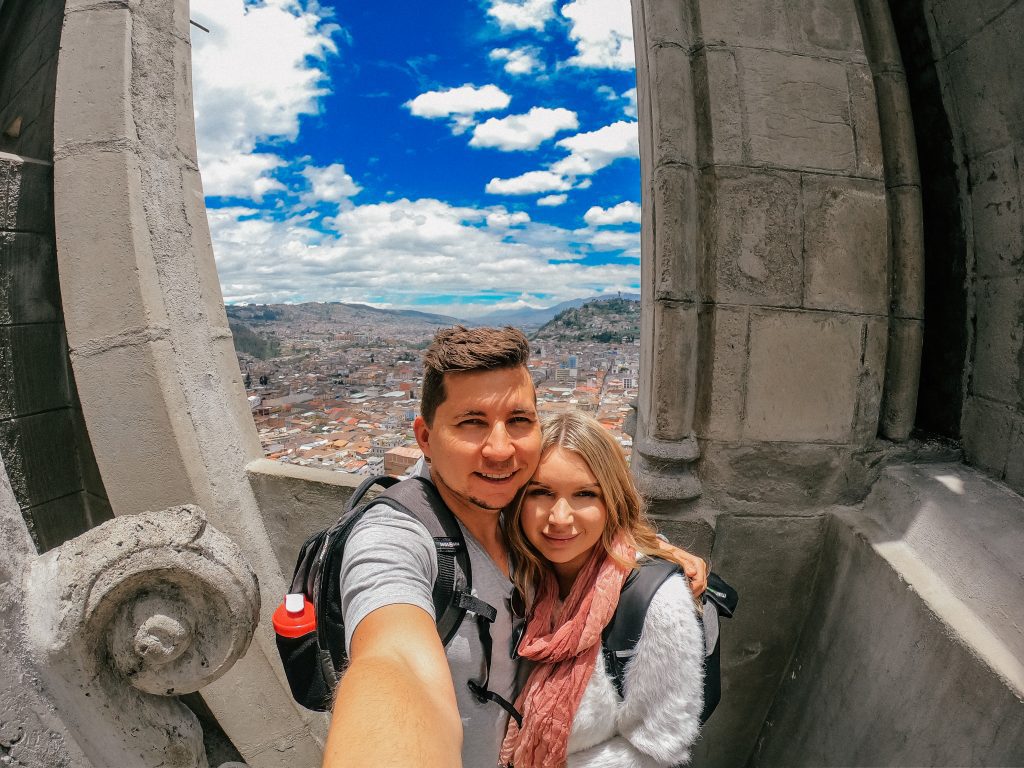
We took some time to delve deeper into Quito’s cultural heritage by visiting the Museo del Carmen Alto, a former convent that has been transformed into a fascinating museum. Exploring the exhibits, we discovered religious art, artifacts, and captivating displays that shed light on Quito’s colonial history and the deep influence of the Catholic Church.
The museum’s serene courtyard provided a peaceful break, while the stunning religious paintings and sculptures added to the museum’s charm. As we continued to wander through Quito’s streets, the city’s unique blend of history and architectural beauty truly transported us to another era, leaving a lasting impression of Ecuador’s rich cultural heritage.
These are just a glimpse of what you can see in Quito. There are more things to do in Quito! Check our blog post about Quito for more information.
Guayaquil
Guayaquil, set along Ecuador’s western coast, is a lively and bustling city, standing as the country’s largest and most populous metropolis. Its vibrant energy and rich culture make it a dynamic destination, offering a mix of modern attractions and historical charm. Known for its vital role as a strategic port, Guayaquil pulses with life, inviting visitors to explore its unique blend of urban experiences.
As the gateway to Ecuador’s stunning Pacific coast and the Galapagos Islands, Guayaquil is a hub for business and tourism.
The Malecón 2000
The Malecón 2000 is a stunning waterfront promenade that stretches along the Guayas River, offering a perfect blend of scenic beauty and cultural attractions. We enjoyed leisurely strolling along the boardwalk, taking in the lush gardens, fountains, and impressive sculptures that lined the path. The views of the river and the city skyline were breathtaking, especially at sunset.
The Malecón is not just about its scenic charm; it’s also a hub for shopping, dining, and exploring Guayaquil’s cultural heritage. There are various restaurants and shops to enjoy, as well as museums that give you a deeper understanding of the city’s history and culture. It’s a must-visit spot in Guayaquil, offering a little something for everyone.
Las Peñas
Las Peñas is a captivating neighborhood that instantly transports you back to Guayaquil’s colonial days. The vibrant colors of the houses, combined with the narrow, winding cobblestone streets, give the area a distinctly artistic and nostalgic feel. Climbing the 444 steps to the top was a bit of a challenge, but the sweeping views of Guayaquil from Cerro Santa Ana made every step worthwhile.
Plan perfect trip to Ecuador & Galapagos
I spent countless hours researching everything about traveling to Ecuador, and I created this blog for fellow travel enthusiasts who want the best, most reliable information. But if you want to save time, we’ve partnered with the top local agency to plan your dream trip.
As we made our way up, we took our time visiting the local art galleries, boutiques, and charming cafes. Stopping at the Museum of Las Peñas added depth to our experience, offering fascinating insights into the neighborhood’s history. The blend of art, history, and scenic views makes Las Peñas an unforgettable part of any trip to Guayaquil.
Parque Seminario and the Friendly Iguanas
Parque Seminario, affectionately called Parque de las Iguanas, is a quirky highlight in Guayaquil that we thoroughly enjoyed. Wandering through this green oasis, we found ourselves in the company of countless iguanas, casually roaming the grounds or perched in trees. It was a unique experience to observe these creatures so closely, as they mingled freely with visitors, seemingly unfazed by the attention.
We spent time relaxing on a bench, watching these gentle reptiles up close, and soaking in the park’s serene atmosphere. It was truly a memorable way to enjoy a slice of nature in the heart of the bustling city, with the iguanas adding a wonderfully unexpected charm.
Day Trips From Guayaquil
The Galapagos Islands
Guayaquil is an ideal starting point for any adventure to the Galapagos Islands, offering both cruises and quick, two-hour flights to this remarkable archipelago. Setting out from Guayaquil, we quickly found ourselves immersed in the Galapagos’ untouched landscapes, where marine life thrives, volcanic formations beckon for exploration, and iconic species like the Galapagos tortoises and blue-footed boobies create unforgettable encounters.
The islands truly are Ecuador’s crown jewel, and being just a short flight away makes it easy to add this world-renowned destination to your itinerary.
Check our Galapagos blog post to learn more about our experience in the islands.
The Nearby Beaches of Playas and Salinas
Just a quick drive from Guayaquil, the beach towns of Playas and Salinas are perfect escapes for anyone seeking sun and sea. With their golden sands and inviting azure waters, both towns provide ample options for relaxation and adventure alike. From beach lounging and water sports to savoring fresh seafood at the coastal eateries, these spots are ideal for a memorable beach getaway that’s easily accessible from the city.
Manglares Churute Ecological Reserve
Nature enthusiasts will find the Manglares Churute Ecological Reserve near Guayaquil a must-visit for its incredible biodiversity. This sprawling protected area covers mangrove forests, wetlands, and tropical rainforests, creating a haven for wildlife. We joined a boat tour through the mangroves, spotting various bird species and glimpsing the lush beauty of Ecuador’s natural landscapes. The reserve’s diversity was amazing, and we were thrilled to experience Ecuador’s rich ecosystems up close.
Guayaquil promises a memorable experience for every traveler. Discover more about the best things to do in Guayaquil in our blog post.
Cuenca
Cuenca was my favourite Ecuadoran city we visited with its blend of colonial charm, artistic flair, and scenic surroundings. Known as Ecuador’s cultural heart, the city is celebrated for its beautifully preserved historic center, which is a UNESCO World Heritage Site, and its welcoming locals. The peaceful atmosphere here adds to its allure, making it an ideal spot to immerse yourself in Ecuadorian culture and history.
Cuenca: A UNESCO World Heritage Site
Wandering through Cuenca, you can feel the weight of its history and appreciate the architectural beauty that led to its UNESCO World Heritage designation. The city’s colonial charm unfolds along its cobblestone streets, where you’ll find elegant plazas and stunning churches, some dating as far back as the 16th century.
Cuenca’s Architectural Gems
Catedral Nueva
The Catedral Nueva, or New Cathedral, truly stands as one of Cuenca’s most remarkable sights. Its iconic blue domes are visible from across the city, creating a striking feature of the Cuenca skyline that invites visitors to step inside and explore. We marveled at the impressive interior, with its beautifully detailed woodwork, vibrant stained glass windows, and carefully crafted religious artwork, each element contributing to the cathedral’s sense of grandeur and reverence.
Plaza de las Flores
At Plaza de las Flores, we found ourselves surrounded by a kaleidoscope of colors and floral scents that filled the air. This charming square, with its vibrant blooms and ornate balconies, quickly became one of our favorite spots in Cuenca. We spent some time relaxing at one of the nearby cafes, sipping Ecuadorian coffee and taking in the lively yet peaceful ambiance. The plaza’s energy, combined with the warmth of the locals, made it a perfect place to pause and enjoy the everyday beauty of Cuenca.
El Museo del Sombrero
Exploring El Museo del Sombrero was an unexpected highlight of our time in Cuenca. This museum, dedicated to the famous Panama hat (which, interestingly, originates from Ecuador), offers a fascinating look into the craftsmanship and history behind these iconic accessories. As we wandered through exhibits on traditional weaving techniques and watched artisans at work, we gained a new appreciation for the intricate designs and the cultural pride embedded in every hat.
Cuenca’s charm extended beyond the Hat Museum; the city’s blend of architectural elegance, serene plazas, lively markets, and vibrant art scene made it a paradise for anyone interested in culture and history. We felt the spirit of Ecuador’s heritage deeply, all while seeing how Cuenca celebrates creativity and artistic expression in its own unique way.
Here are more things you can do in Cuenca.
Baños
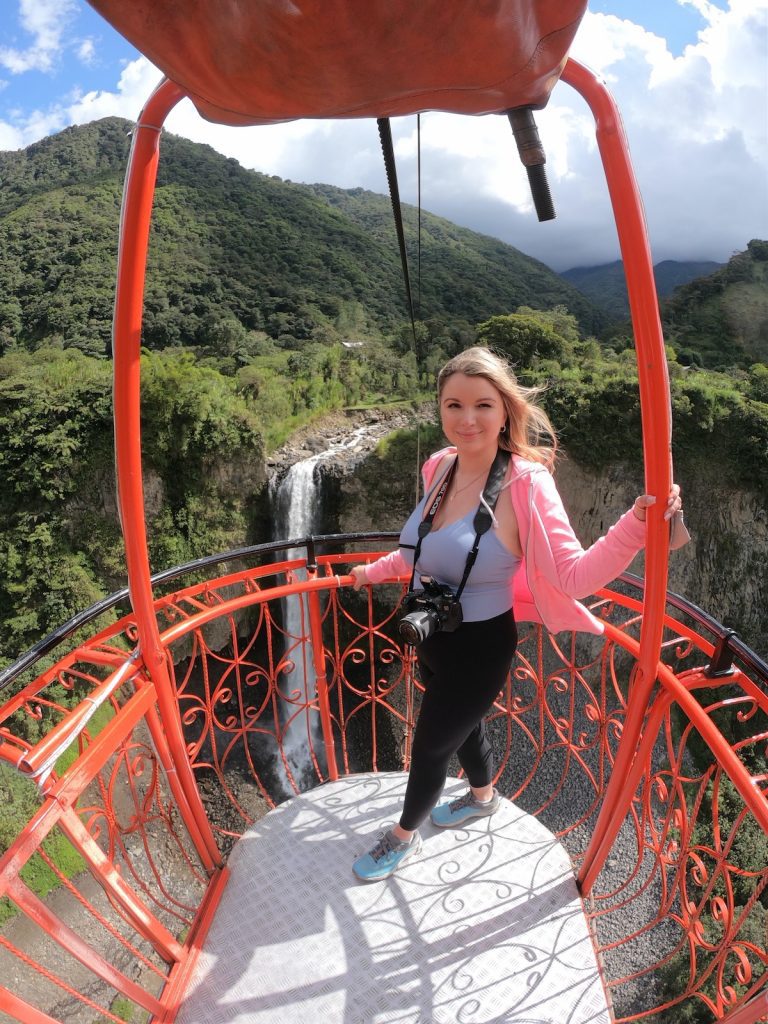
Baños is the Ecuadorian city that captivated us immediately with its unique location at the foot of the Tungurahua volcano. Known fittingly as the “Gateway to the Amazon,” this town is a hub of natural beauty, thrill-seeking activities, and opportunities to unwind. Whether you’re drawn to its rejuvenating hot springs or the adrenaline-packed adventures, Baños attracts both locals and travelers worldwide, offering something unforgettable for everyone.
Natural Beauty and Outdoor Adventures
Waterfalls
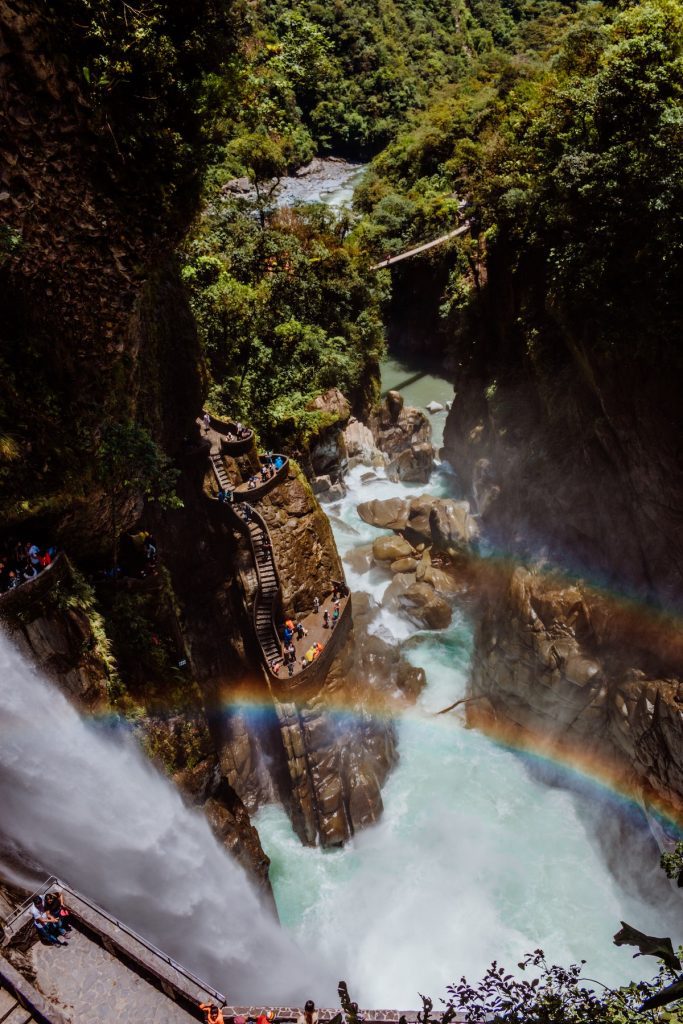
Thermal Baths
Baños’ natural hot springs are a true blessing, providing a soothing retreat after a day of hiking and exploring. Nothing beats sinking into the warm, mineral-rich waters, surrounded by beautiful mountain views, as the thermal baths offer a chance to relax and recharge. The hot springs felt like a perfect way to ease tired muscles, and the scenic backdrop made it all the more rejuvenating. It’s an experience I highly recommend for anyone visiting Baños!
Adventure Sports
Baños is a thrill-seeker’s paradise, with adventure sports that cater to every adrenaline level. I remember the rush from zip-lining across the valleys, feeling the wind and taking in those dramatic views. White-water rafting was another highlight, with the river’s intensity adding to the excitement of navigating the rapids. For those who crave adventure, Baños has a full lineup—from canyoning down waterfalls to mountain biking through rugged trails, there’s no shortage of ways to get your heart racing in this incredible town.
The Swing at the End of the World
The “Swing at the End of the World” at La Casa del Árbol is an absolute must-do in Baños. Swinging out over the cliff, with nothing but the stunning Andean landscape and the Tungurahua volcano behind you, is both thrilling and surreal. The experience definitely got our hearts racing, but the views made it all worthwhile. Plus, it’s the perfect spot to capture that iconic Instagram shot!
Day Trips from Baños
The Amazon Rainforest
Baños is not only an adventure hub but also the perfect starting point for exploring the Amazon rainforest. We took a guided tour into the jungle, where we marveled at the incredible biodiversity, from exotic plants to colorful wildlife. Our guide shared fascinating insights into the indigenous cultures and their deep connection to the forest. It’s an unforgettable experience that really opened our eyes to the natural wonders of the Amazon.
Trust me, having local insight makes all the difference when exploring Ecuador’s diverse cities. Want an expertly curated itinerary that ensures you don’t miss the best of Quito, Guayaquil, or Baños? Get a FREE quote from my recommended local agency. Your booking supports this blog and empowers local Ecuadorian businesses.
Quilotoa Crater Lake
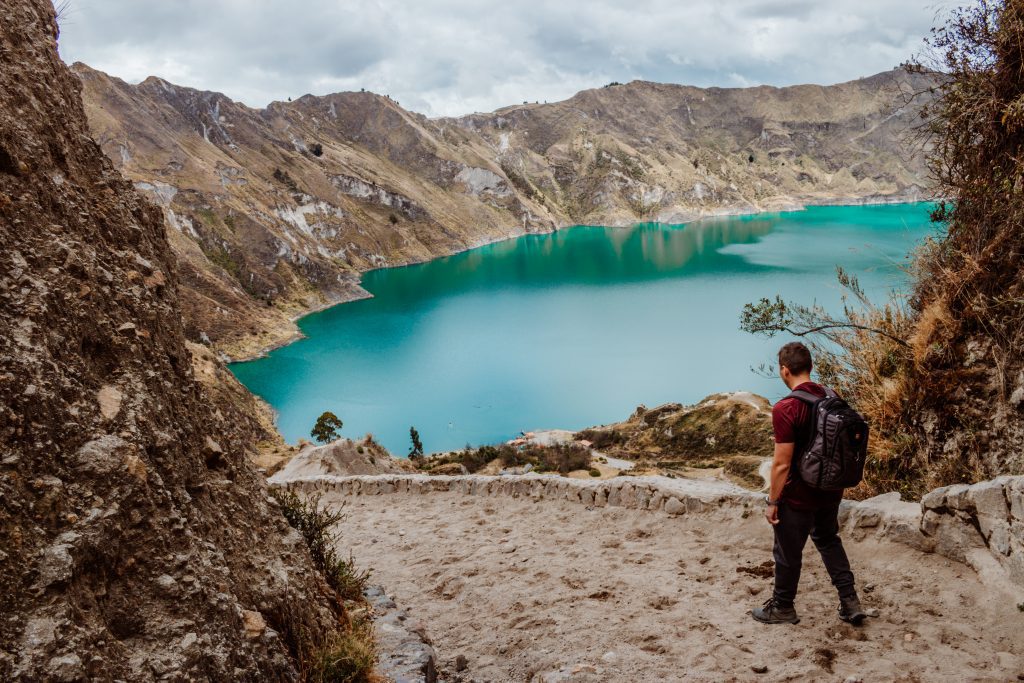
A day trip to Quilotoa Crater Lake was one of the highlights of our time in Ecuador. The sight of the vibrant turquoise waters contrasting with the rugged Andes landscape left us speechless. We hiked around the crater’s rim, taking in the incredible panoramic views from every angle. If you’re visiting Baños, I highly recommend adding Quilotoa to your itinerary—it’s an unforgettable nature experience that truly captures the beauty of Ecuador.
Find out the top things to do in Baños in our blog post.
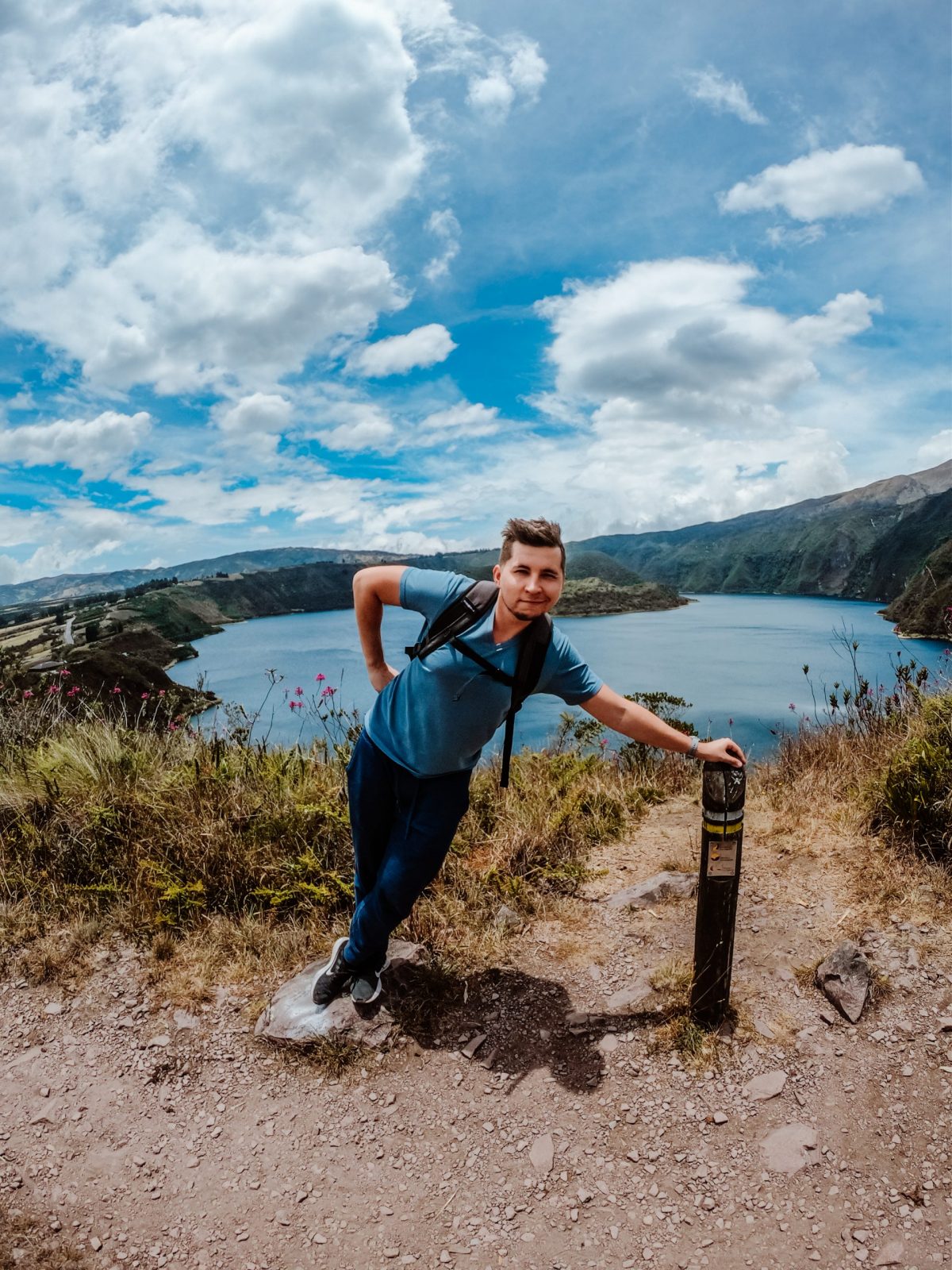
Planning trip to Ecuador?
My wife and I rented a car for 15 days and traveled from the northern part of Ecuador to the south, visiting amazing cities like Quito, Otavalo, Baños, Cuenca, and Guayaquil. Along the way, we explored iconic places such as Cotopaxi National Park, Quilotoa Lake, and many more breathtaking destinations.
Not many blogs cover traveling in Ecuador in detail, so I spent nearly three weeks creating this comprehensive Ecuador travel guide based on our trip. It’s packed with everything you need to know, and honestly, I consider it the best free travel guide about Ecuador out there.
If you’re planning a trip to Ecuador, don’t forget to use my link for discounted hotel prices through Booking.com. It’s a great way to support my blog while saving money on your accommodations!
Wandering Through Ecuador
Ecuador’s cities are truly a gateway to discovering the country’s heart and soul, blending ancient history with lively modern culture. From the historic streets of Quito to the vibrant coastal life in Guayaquil and the cultural haven of Cuenca, every destination offers a unique glimpse into Ecuador’s past and present. The warm hospitality, fascinating heritage, and diverse landscapes invite you to dive into experiences that will deepen your love for this incredible country.
So, start planning your itinerary, and get ready to uncover the captivating charm of Ecuador’s cities firsthand!
Make sure to check our Ecuador travel guide.

